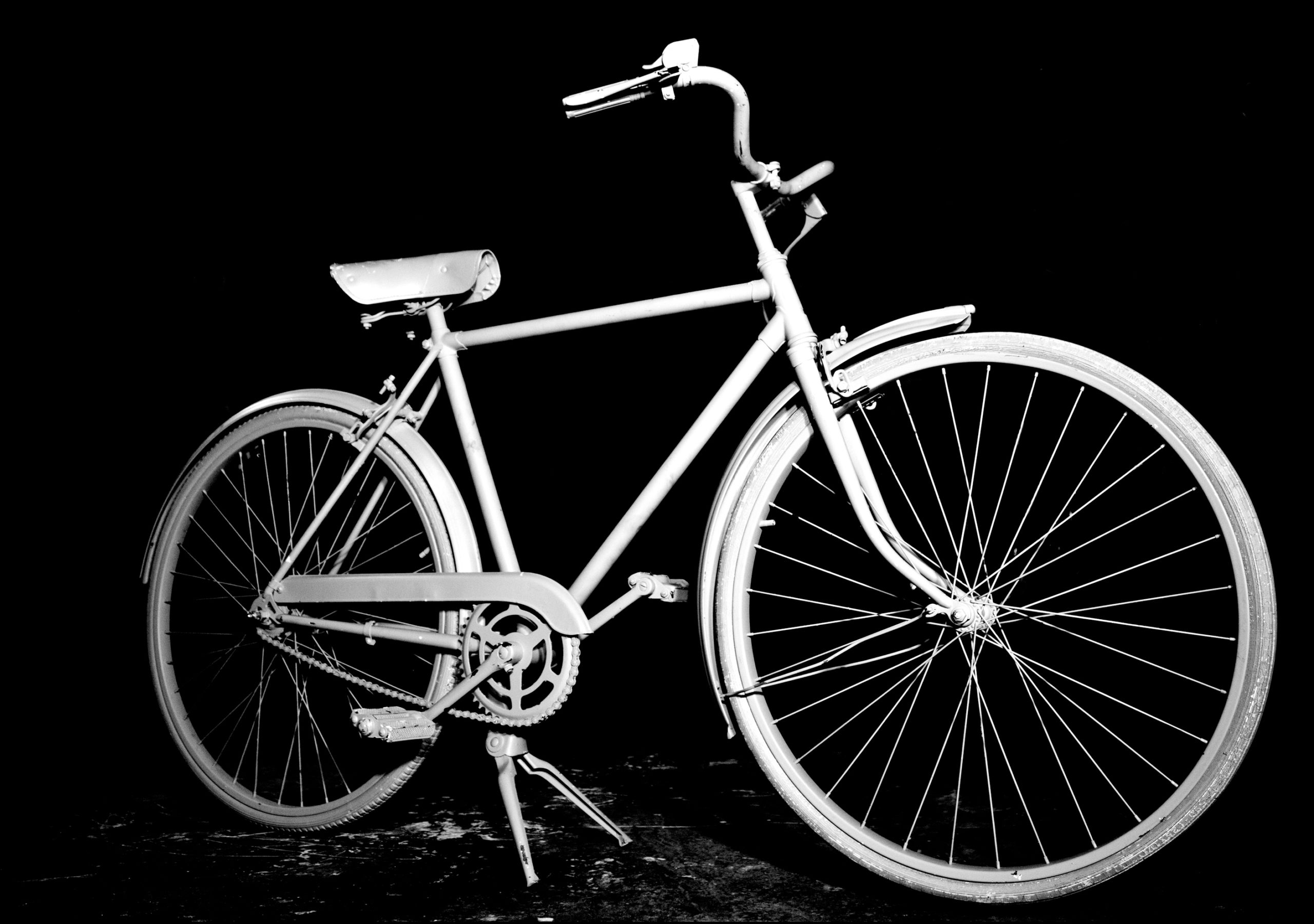Amidst the rise of colourful art bike installations, Geoff Bercarich of Advocacy for Respect for Cyclists reminds us of what deathly white ghost bikes represent

In the basement of a Toronto home filled with worthless, broken bicycles, Geoff Bercarich picks out three robin’s-egg-blue skeletons,which he will spray paint white in his studio at Bike Pirates, a bike repair shop near Lansdowne subway station. I help him haul them up the stairs, one by one. “These are beautiful,” I say, to which he replies, “So what?”
Ghost bikes, memorials meant to honour fallen cyclists placed at the intersection of the fatality, don’t count as art, according to this dedicated Advocacy for Respect for Cyclists volunteer—and any artistic bike installations around the city just confuse the message of ghostbikes, standing simple and starkly white.
The ghost bike is an age-old advocacy tool for cyclist rights and safety. They can be found in most cities, especially New York City and Boston. The most recent statistics on Toronto cyclist death rates,however, are unusual: six deaths in 2012 alone, the highest number since 1995.
In times of tragedy, says Bercarich, the message of ghost bikes needs to be loud and clear.
“I don’t consider it an art form; I consider it a way to communicate to cyclists and politicians alike to identify what needs changing,” he says. “Warnings need to be put up for cyclists and awareness of cyclists needs to be apparent.”
But as ghost bikes pop up around the city, so do street art bike installations,which look similar to ghost bikes, but take on an entirely separate meaning.
One such art bike installation started in the summer of 2011 by two Ontario College of Art and Design University visual arts students Caroline Macfarlane and Vanessa Nicholas, is a collection of Toronto’s abandoned bikes spray-painted in bright colours, like neon pink and highlighter yellow.
The idea came to Macfarlane after she saw an abandoned bike locked to a rack that had been there for months. She watched the bike, and its lock, turn rusty for six months before spraying it down with an orange coat. The art project was a hit.
But it’s not the art that Bercarich has a problem with: it’s the confusion it has created over what the idle, dead bikes symbolize. The shift from activism to art makes him uneasy.
“People consider it a global art form—artists take it out of context and make their crazy art bikes, but there are advocates who will take it upon themselves to do this continuously, repeatedly,” says Bercarich.
Once it became popular, the Good Bikes Project came to represent something entirely different from ghost bikes. Passersby snapped photos of the bike and stopped in their tracks to get a good look. It wasn’t until it was a fresh shade of orange that the city, complying with a bylaw,placed a two-week notice for removal it became a story—not about bikes or the cycling community, but about the city’s war against street art, and how the project changed the city’s mind. The Good Bike Project eventually won over the city, and the bikes still stand.
The installation initially set out to make the city look nicer, an endeavour Bercarich has little patience for.
“I like the simplicity of a ghost bike,” he says. “You can make a really ugly ghost bike if you just leave everything on and do a really half-assed paint job, but it’s important for me to show the white elements, the white of forgiveness.”
To anyone who considers ghost bikes an artform, he immediately debunks the notion.
“These things aren’t going to be in a gallery,” he says. “They’re not going to be observed by people that want to buy them. So I don’t really consider it art. But again, other people do, and I won’t discourage that.”
Between art and advocacy, however, is the “green bike,” which borrows from the artistic qualities of the Good Bikes Project and from the advocacy element of ghost bikes. It stands to represent cycling as a good for the environment.
Derek Chadbourne, who mans Charlie’s Bike Shop on Queen Street East, is the first to birth the concept. Parked on a traffic median at Charles and Jarvis to commemorate the end of the Jarvis bike lane, the green bike initially contained two letters: one, explaining to a future reader what a bicycle is, and the other,what Chadbourne calls a “fuck-you letter” to Mayor Rob Ford.
However, with all the manifestations of the ghost bike, Bercarich is not bothered. Rather, he is preoccupied with preserving a very particular reaction from everyday people to ghost bikes, which he thinks can make a difference in Toronto, whose cycling experience he calls “dangerous and deadly.”
“They stop, and they feel mourn,” he says. “They know. It’s almost like seeing a lighthouse, you know what it is.”
By Leslie Armstrong, Editor in Chief



